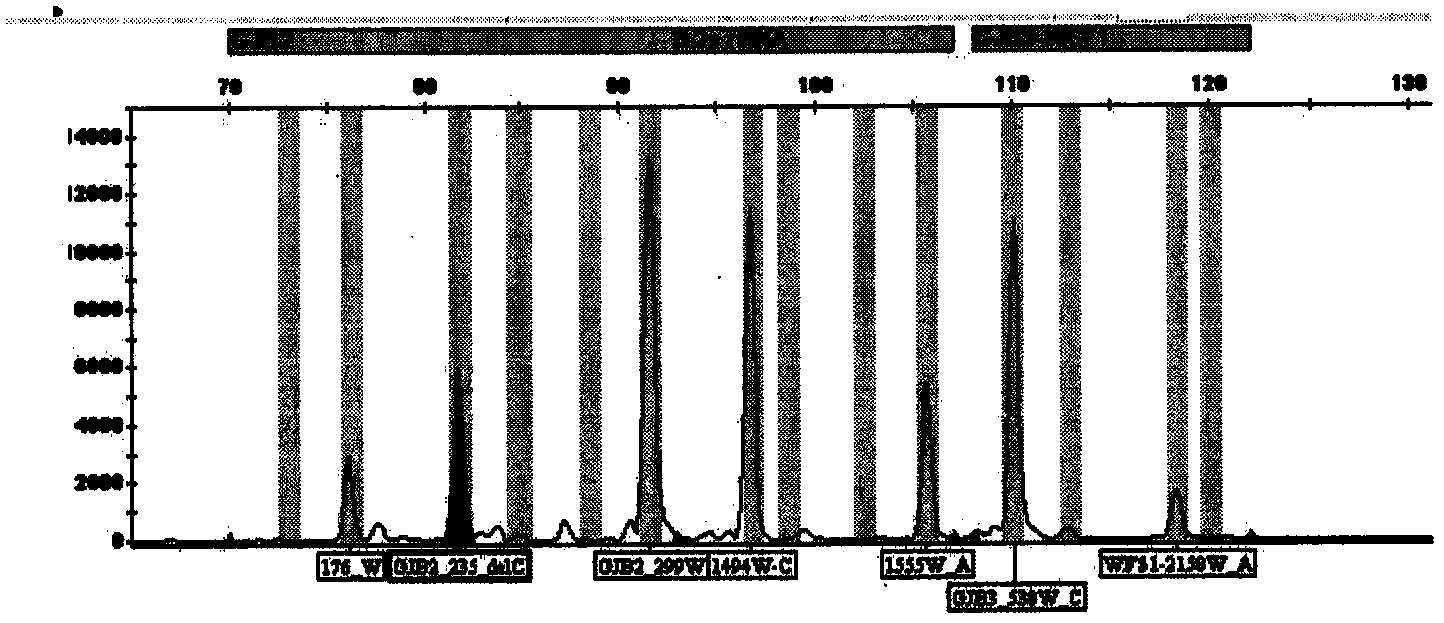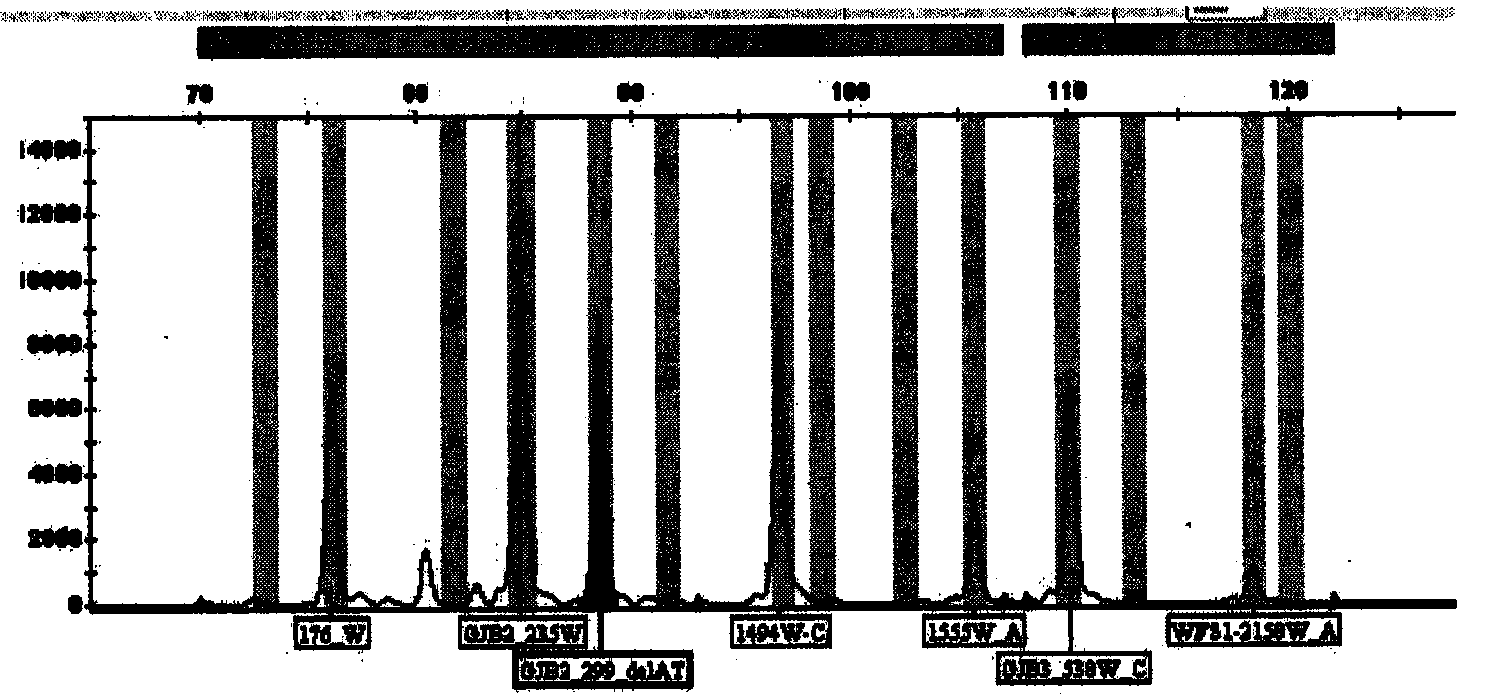Multiple PCR-LDR (polymerase chain reaction-ligase detection reaction) detection kit for multiple deaf susceptibility genes with high specificity at 14 sites
A PCR-LDR, detection kit technology, applied in the field of DNA molecular detection, can solve problems such as non-functional proteins, gap junction defects, frameshift mutations, etc.
- Summary
- Abstract
- Description
- Claims
- Application Information
AI Technical Summary
Problems solved by technology
Method used
Image
Examples
Embodiment 1
[0130] Example 1: PCR-LDR detection kit for 14 deafness susceptibility loci and its use
[0131] 1. Kit composition: PCR amplification reagents include: PCR buffer, MgCl2, dNTPs mixture Remix, EX-Taq enzyme, 2 sets of primer mixtures (Primer1 contains 4 pairs of primers for GJB2, GJB3, mitochondrial 12SrDNA and WSF1 genes; Primer2 Contains 5 pairs of primers for 2168, 1975-2027, IVS7-2, 1174-1226 and WSF1 gene loci) and ultrapure water; LDR ligation reaction reagents include: 2 sets of universal fluorescent probes and 14 sets of detection probe mixtures, DNA Ligase, 10X buffer and ultrapure water; genotyping reagents include: ROX-300 internal standard, genotyping standards corresponding to 14 deafness gene mutation sites used for genotyping; quality control products include: negative The quality control product is sterilized double-distilled water. The wild-type quality control product is genomic DNA with 14 wild-type sites identified by sequencing. The positive quality contro...
Embodiment 2
[0152] Embodiment 2 determines optimal primer and multiplex PCR system
[0153] First, a series of primer pairs were designed for screening, and finally the optimal primer pair was selected to establish a single-plex PCR reaction system. The results showed that the designed primers could correctly amplify the target bands, and each band was brighter. Singleplex PCR products were verified to be correct by sequencing. Such as Figure 17-1 shown. From left to right, Marker, amplification products corresponding to primers of GJB2, mitochondrial 12SrDNA, 2168, 1975-2027, IVS7-2, 1174-1226, WSF1, and GJB3 genes, Marker1000bp. Secondly establish multiple PCR system, by adjusting different concentration ratio between primers, determine optimal multiple PCR system, multiple PCR system band that the present invention establishes is clear, without non-specific band amplification, such as Figure 17-2 .
Embodiment 3
[0154] Embodiment 3: specificity test
[0155] Materials: 14 known positive DNA samples of deafness loci, positive plasmid samples, and 5 known negative samples were taken. All the above samples were sequenced and tested with this kit at the same time. The results were analyzed and verified: 14 loci The detection results of the deafness susceptibility gene PCR-LDR detection kit are completely consistent with the sequencing results, and the kit has strong specificity.
PUM
 Login to View More
Login to View More Abstract
Description
Claims
Application Information
 Login to View More
Login to View More - R&D
- Intellectual Property
- Life Sciences
- Materials
- Tech Scout
- Unparalleled Data Quality
- Higher Quality Content
- 60% Fewer Hallucinations
Browse by: Latest US Patents, China's latest patents, Technical Efficacy Thesaurus, Application Domain, Technology Topic, Popular Technical Reports.
© 2025 PatSnap. All rights reserved.Legal|Privacy policy|Modern Slavery Act Transparency Statement|Sitemap|About US| Contact US: help@patsnap.com



